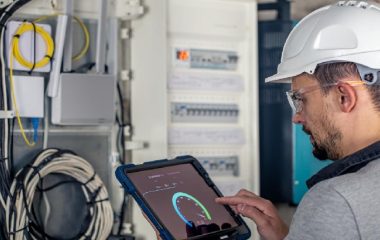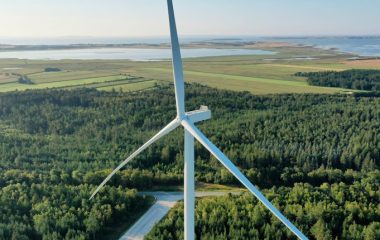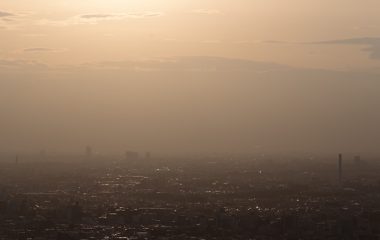
Albania is one of 49 countries complying with the Extractive Industry Transparency Initiative (EITI). The government published the report on the extraction of oil, gas and other minerals, contribution of this industry to the budget and allocation and spending of income. The EITI report for the years 2013 and 2014 provides an overview which includes hydroelectricity and reconciliation of main flows paid by licensees and collected from the government agencies in this and other sectors.
Based on data reported by the National Agency of Natural Resources (AKBN) and the Energy Regulatory Authority (ERE), the production generated out of these sectors is estimated at USD 777 million (EUR 715 million) in 2013 and EUR 750 million in 2014, according to portal Albeiti.org. The share of hydropower was EUR 97.5 million and EUR 84.7 million, respectively. Its contribution to the national budget was 8.7% in 2013 and 3.5% in 2014, where the former was affected by the privatization of four power plants.
Contribution of the extractive industry to total employment is almost insignificant. Because of the large number of small-scale producers in the mining and hydropower sectors, certain materiality criteria based on annual turnover and production were applied to select the most significant producers. In hydroelectricity sector, the multi stakeholder group (MSG) selected the 10 largest producers and five largest investments in the pre-production phase for the report.
In 2013, 42% of power was lost in the distribution system because of its poor technical conditions and informal connections to the system. In 2014, the losses dropped to 36% of domestic needs for power.
Electric power accounted for 29.3% and wood had a share of 9.9% in total energy produced by primary sources in 2013. Crude oil dominated with 59.1%, and its share increased in 2014 to 67.7%. The shares of natural gas and other sources were in the 1% range. Electric power accounted for 20.1% in 2014, while wood had a share of 10%, according to Instat, the Albanian statistics agency.
Hydropower generation is dominated by the public sector. At the end of 2014, the state owned and operated the Albanian Electrical Power Corporation (KESH), the Transmission System Operator (TSO or OST) and the Electricity Power Distribution Operator (Oshee). KESH is the largest producer in the country. With an installed capacity of 1,45 GW or 80% of total installed capacity in Albania built in a cascade over Drini River in the north, KESH contributed with 87% of power output in 2013. This ratio fell to 74% in 2014, due to increase activity of private hydropower plants and those under concession.
ERE reported domestic hydropower output of 6.96 TWh in 2013 and 4.73 TWh in 2014. If estimated using average export prices, domestic output would have been reported at ALL 25.5 billion (EUR 185.2 million) in 2013 and EUR 175.1 million in 2014. However, because KESH sells its output at regulated price of ALL 1 (0.73 euro cents) per KWh, sales from the sector did not exceed EUR 79.9 million in 2013 and EUR 69.7 million in 2014.
The state subsidizes the power sector through regulation prices of power generation, transmission and distribution. This fact explains the relatively low contribution of the sector to GDP at about 2%, the report said. In 2013, 42% of power was lost in the distribution system because of its poor technical conditions and informal connections to the system. In 2014, the losses dropped to 36% of domestic needs for power as a result of combined efforts of the government and the power distribution company Oshee. Foregone contribution of power losses measured at export prices is estimated to be EUR 162 million in 2013 and EUR 144.5 million in 2014.
The cost structure of domestic power output has changes in the last five years with the intensification of production from private and hydro systems under concession and is expected to change further when a large number of medium and small plants under concession enter production phase. The sector’s known contribution accounted for 4.9% of the total revenue in the budget in 2013 and 0.1% in 2014.
Data reported from AKBN show that a large number of hydro facilities with concessions has not commenced construction or is still under construction, showing delays of two years and above. Out of 501 systems, 307 with installed capacity of 1.13 GW and estimated generation of 6.3 TWh per year have not yet started the construction phase. The remaining 84 are under construction.
According to the national energy strategy, potential annual production from hydropower plants in Albania is estimated at 10 TWh. This can be derived from an installed capacity of 3 GW. Current exploited opportunities represent 58% of the hydropower potential with a total installed capacity of 1.73 GW.
The final aim of this initiative is to promote transparency in order to prevent corruption, and raise awareness among citizens to demand from their government proper use of the fiscal and non-fiscal income generated from the exploration and exploitation of natural resources in Albania. EITI is a voluntary international coalition of governments, extractive industry companies and civil society organizations engaged in management and use of natural resources.








